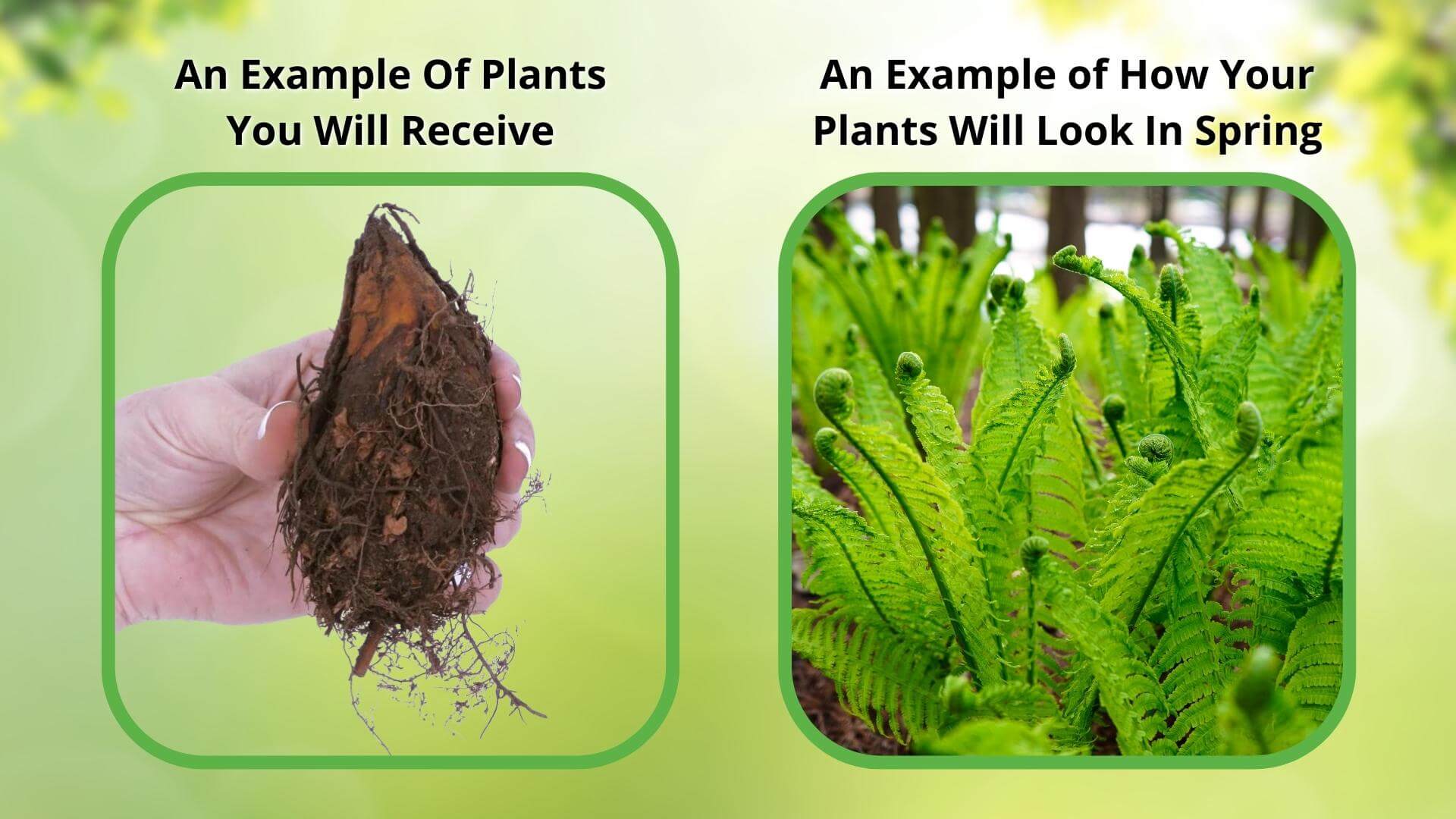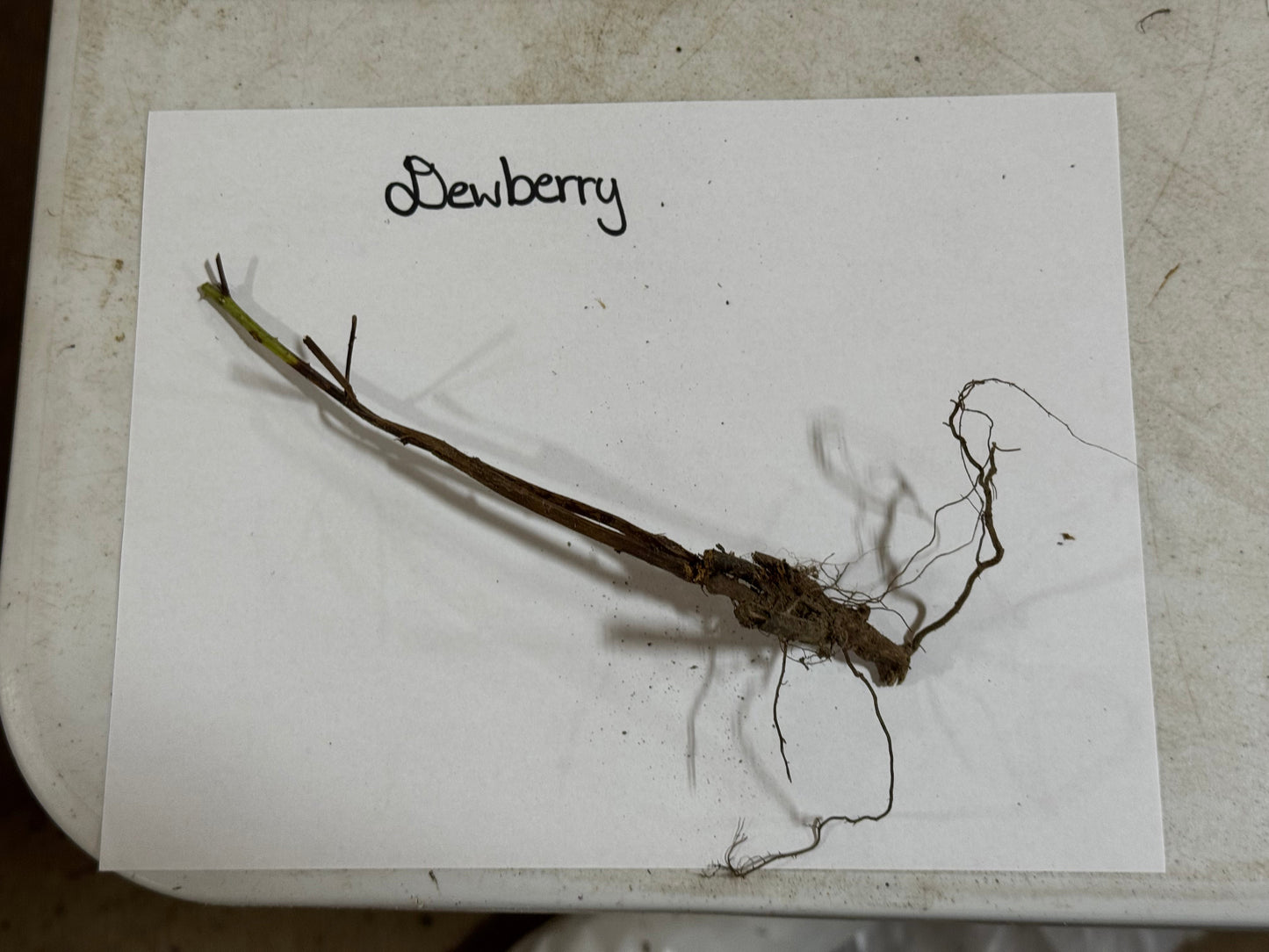Couldn't load pickup availability
🌸When you add 1 plant to cart, it automatically adds the free one
Buy Dewberry Plant - Rubus
The Dewberry Plant is a fruit-bearing perennial, whose small, sweet berries are the lesser-known sister of the typical Blackberry. The plant is native to the southern and midwestern United States, and the berries are especially favored in those areas for pies and jams.
Before the berries burst out in the summer, delicately beautiful white flowers are found in their place. The spring and summer interest of this resilient US native bring year round beauty to your native or woodland garden.
Plant Details - Dewberry Plant (Rubus)
Family: Rosaceae
Light Requirement: Full sun, Partial shade
Water Needs: Moderate
Height: 1-3 ft
Spread: 3-6 ft
Growth Rate: Rapid
Soil Preference: Moist
Bloom Time: Spring
Flower Color: White
Wildlife Value: Mammals and birds eat the berries, nectar provides pollination
Notable Characteristics - Dewberry Plant (Rubus)
The Dewberry Plant is naturally named for the delicious Dewberries it produces. It is a sprawling shrub with tangled, woody stems covered in thin hairs and small, red thorns. It is an aggressive spreader, and its thin, vine-like branches can easily spread up to six feet in your garden. Amidst the small, toothy leaves, it bears tiny white flowers.
The five round petals circle a green center. By summer, the flowers have died back to reveal an arching cluster of small, red berries that deepen to purple-black as they ripen.
Landscape and Maintenance - Dewberry Plant
This wild, thorny, and beautiful plant is native to the moist thickets, open woodlands and meadows of North America, so it is a resilient and hardy plant. The Dewberry Plant prefers full sun and is able to tolerate partial shade, but tends to grow rapidly in multiple favorable conditions.
The berry plant is attractive to the whole wildlife community, as many small mammals, birds and insects eat the berries and spread the seeds. The leaves are highly attractive to rabbits and deer, however, so in a home garden, be sure to add extra protection so these hungry creatures won’t damage this stunning plant!
This Is How Your Plants Will Look upon Delivery

Bloom Season
Summer
Bloom/Foliage Color
White
Height at Maturity
Over 12"
Care
Dewberry plants thrive with regular watering and well-drained soil. Prune annually to remove old canes and encourage new growth. Fertilize in spring for optimal fruit production.
How to Grow and Care for Fruit Trees and Berry Plants
Fruit trees and berry plants bring beauty, fragrance, and delicious harvests to your garden while supporting pollinators and wildlife. To grow them successfully, choose varieties suited to your USDA zone and plant them in full sun—at least 6–8 hours daily—for the best fruit production. Both fruit trees (like apple, peach, and pear) and berry plants (like blackberry, raspberry, and blueberry) thrive in well-draining, compost-enriched soil.
Plant in early spring or fall, spacing according to the plant’s mature size to ensure proper airflow and sunlight. Water deeply after planting and keep the soil evenly moist during the first growing season. Mulch around the base to conserve moisture, suppress weeds, and regulate temperature, but keep it a few inches away from the trunk or stems.
Prune annually to encourage healthy branching and better yields. Fertilize in early spring with a balanced or fruit-specific blend. With regular care, fruit trees and berry plants reward you with beautiful blooms and sweet, homegrown harvests for years to come.
Shipping date depends on the date displayed and chosen when you order from the product's page.
We only accept returns on plants verified dead. If you think your plants have died, we offer a 1 year warranty, please use use this File a Claim Link to verify dead plants and start with return warranty process.




Caring Tips
How do I care for my Dewberry Plant?
Each box contains detailed care instructions and information about your product. But here's the basics.
Care Tips
Dewberry plants thrive with regular watering and well-drained soil. Prune annually to remove old canes and encourage new growth. Fertilize in spring for optimal fruit production.
Light Requirements
Dewberry plants thrive in full sun to partial shade. They favor at least 6 hours of natural daylight daily but can take some shade, especially in hot climates where partial shade helps protect them from excessive heat.
Hardy Planting Zones
5 • 6 • 7 • 8 • 9
Buying Dewberry plants from TN Nursery was a fantastic experience. The plants are flourishing, and I look forward to abundant harvests.
These Dewberry plants are beautiful and strong. Their rapid growth and healthy foliage make them a standout addition to my garden.
I’m amazed at how robust these Dewberry plants are. They started producing much faster than expected and taste incredible.
TN Nursery’s Dewberry plants are perfect for backyard growing. They are hardy, adaptable, and already spreading wonderfully.
Each Dewberry plant was carefully packaged with strong, healthy roots. They took off immediately once planted in my soil.





